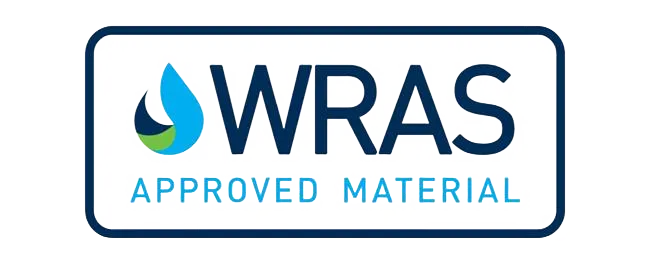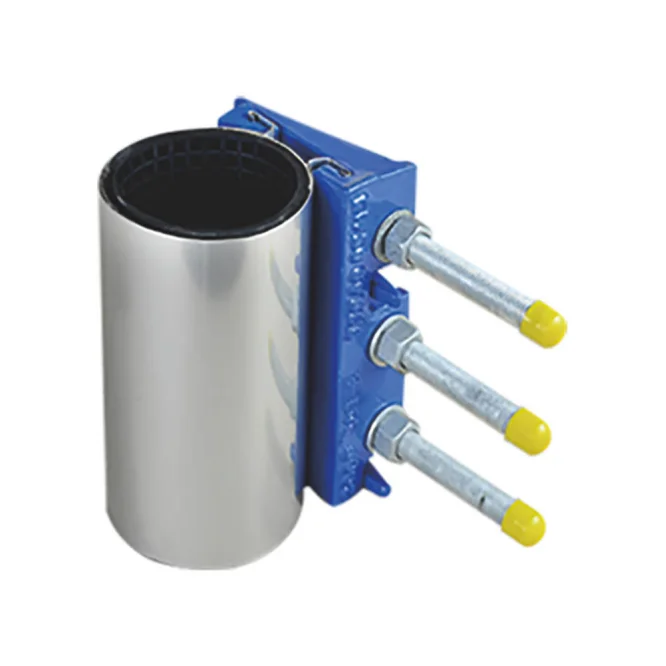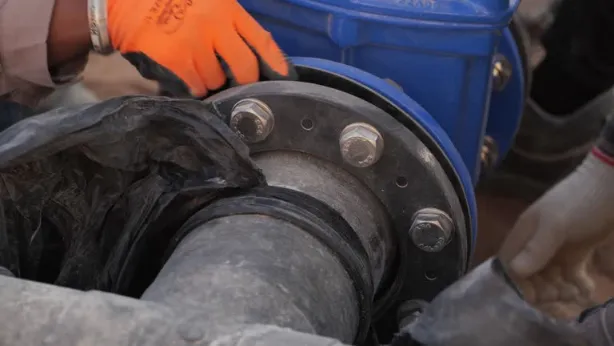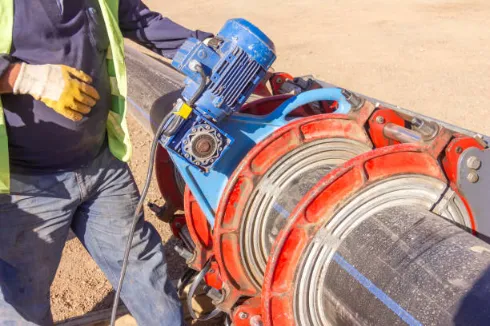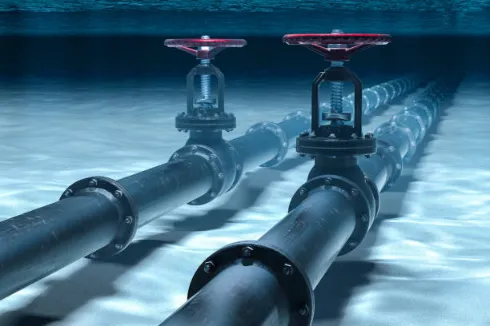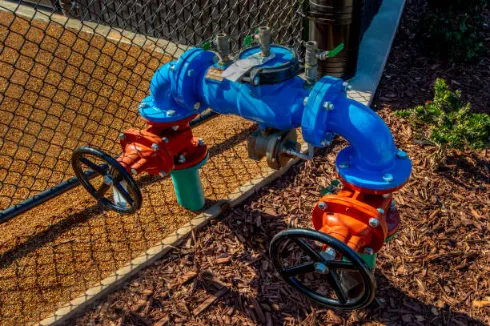Material Composition of Pipe Repair Clamps
Types of Materials Used in Pipe Repair Clamps
Pipe repair clamps are key tools for fixing leaks or damage in pipelines. The materials they’re made from greatly affect how well they work and how long they last. Most pipe repair clamps are built from stainless steel, ductile iron, or carbon steel. Stainless steel is popular because it resists rust and is very strong. This makes it great for many uses, like water pipe repair clamps in water supply or drainage systems. Ductile iron is flexible and tough under pressure. Carbon steel is strong and cheaper, good for less tough environments.
Pipe repair clamps also use rubber gaskets. These gaskets seal the clamp tightly around the pipe to stop leaks. High-quality rubbers like EPDM (ethylene propylene diene monomer) or NBR (nitrile butadiene rubber) are often used. They handle temperature changes and chemicals well.
How Material Quality Affects Durability and Efficiency
The quality of materials decides how long a pipe repair clamp lasts and how well it works. Top-grade stainless steel fights rust even in harsh places. This makes the clamp last longer and cuts repair costs. Poor materials, though, can wear out fast. Moisture, chemicals, or extreme heat can damage them. This leads to frequent replacements.
Low-quality rubber gaskets can lose their stretch over time. They may fail under pressure, letting leaks happen. This causes downtime for more fixes. Using high-quality materials ensures pipe repair clamps work well for a long time.
Conflex Joints has professional technology and equipment, specializing in the production of high-quality repair clips. Their products are sure to make you feel that you get more than you pay for
Design Features of Pipe Repair Clamps
Why Clamp Size and Shape Matter
The size and shape of a pipe repair clamp are key to its success. A good clamp must fit tightly around the damaged pipe. Gaps can weaken the seal. Clamps come in many sizes to fit different pipe widths. This makes them work with various pipeline systems.
The clamp’s shape helps spread pressure evenly across the pipe. For example, round clamps press evenly on circular pipes. Special shapes may be needed for odd-shaped pipes. Careful design avoids stress points that could harm the pipe or clamp.
How Sealing Parts Improve Performance
Sealing parts are crucial for pipe repair clamps. The gasket must make a tight seal to stop leaks. Some designs use extra gasket layers or stronger seals. These work better under high pressure.
Bolts and fasteners also help with sealing. They hold the clamp firmly around the pipe. This keeps the gasket pressed against the pipe. Strong fasteners don’t loosen from shaking or heat changes. This keeps the seal strong over time.
Environmental Conditions and Their Effects
How Temperature Changes Affect Clamp Performance
Temperature swings can impact how well a pipe repair clamp works. Very hot weather can make metal parts expand. It may also make rubber gaskets lose their stretch. This can weaken the seal. Very cold weather can make materials brittle. It can also cause parts to shrink, loosening the fit. To fix this, makers choose materials that handle heat well.
How Harsh Environments Shorten Clamp Life
Harsh environments can hurt a pipe repair clamp’s lifespan. Saltwater, chemicals, or acids can rust metal parts. This weakens the clamp over time. Stainless steel is often used because it resists rust well.
Coatings like epoxy or galvanization add extra protection. They shield the clamp from harmful substances. Regular checks and cleaning are also important in tough environments. They help spot wear early and fix it before the clamp fails.
Installation Techniques and Best Practices
How to Install a Pipe Repair Clamp Correctly
A pipe repair clamp works best when installed right. First, clean the damaged pipe area. Remove dirt or rust. A clean pipe helps the clamp seal tightly. Choose a clamp that fits the pipe’s size and material.
Place the clamp over the leak or crack. Make sure it covers the whole damaged spot. Tighten the bolts evenly in a crisscross pattern. This spreads pressure evenly. It prevents stress on the clamp or pipe. Use tools made for tightening clamp bolts. This ensures accuracy and avoids over-tightening, which can harm parts.
Common Installation Mistakes and Their Effects
Wrong installation can cause problems with pipe repair clamps. One mistake is picking a clamp with the wrong size. A clamp that doesn’t fit won’t seal well. Leaks will continue. Another error is not cleaning the pipe first. Dirt can stop the gasket from sealing properly.
Tightening bolts too much or too little is also common. Over-tightening can bend metal or break gaskets. Under-tightening leaves the clamp loose. It may not hold under pressure. Both mistakes can make the clamp fail, leading to costly fixes.
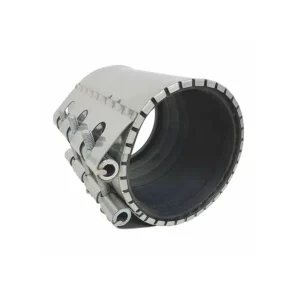
Maintenance and Inspection Practices
Regular Care to Make Clamps Last Longer
Routine care helps pipe repair clamps last longer. Check them often for wear or damage. Look for rust on metal parts or cracks in gaskets. Clean clamps to remove dirt, rust, or chemicals. These can harm materials over time.
Lubricate bolts and fasteners to stop rust. This makes adjustments easier later. For clamps in high-pressure pipes, tighten bolts now and then. This fixes loosening from shaking or heat changes.
Spotting Signs of Wear and Tear
Catching wear early stops small problems from becoming big ones. Look for rust on metal parts. It shows exposure to water or chemicals. Check rubber gaskets for hardening or cracks. These reduce sealing power and raise leak risks.
Watch for changes in the pipeline. Slow flow or strange noises near repaired spots may mean a failing clamp. Fix these issues quickly to avoid bigger problems.
Frequently Asked Questions
What Materials Are Used in Pipe Repair Clamps?
Pipe repair clamps are often made from stainless steel. It resists rust and is strong. Ductile iron is used for flexibility under pressure. Carbon steel is cheaper for less tough environments.
How Do I Install a Water Pipe Repair Clamp Correctly?
Clean the pipe thoroughly first. Use a clamp that fits the pipe’s size. Tighten bolts evenly in a crisscross pattern. This ensures a strong, even seal.
How Can I Make a Pipe Repair Clamp Last Longer?
Check clamps often for rust or gasket wear. Clean them regularly. Lubricate fasteners to prevent rust. This keeps the clamp working well.
Are Water Pipe Repair Clamps Good for High-Pressure Pipes?
Yes, many pipe repair clamps work for high-pressure pipes. Use strong fasteners and reinforced gaskets. Install them correctly for a tight seal.
For more details about Conflex Joints’ pipeline products for water supply, oil, and other industries, reach out today!




